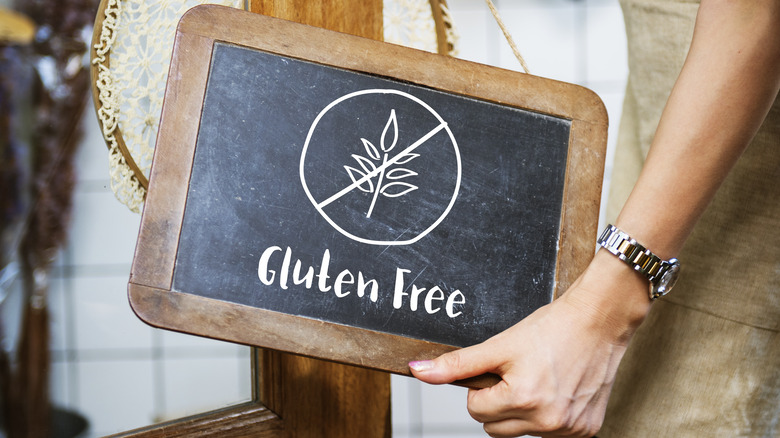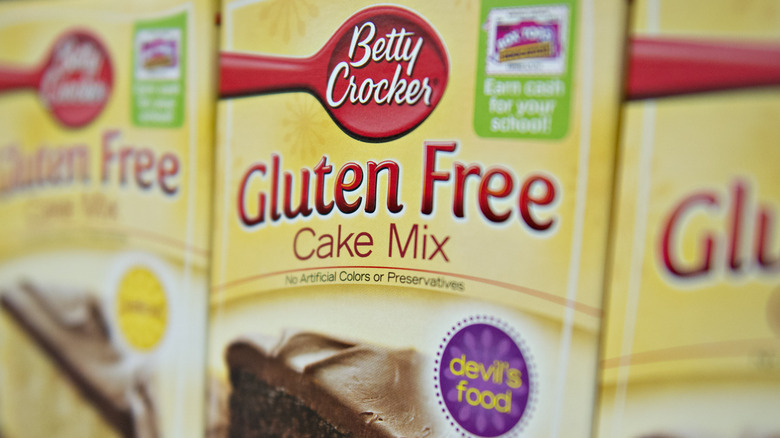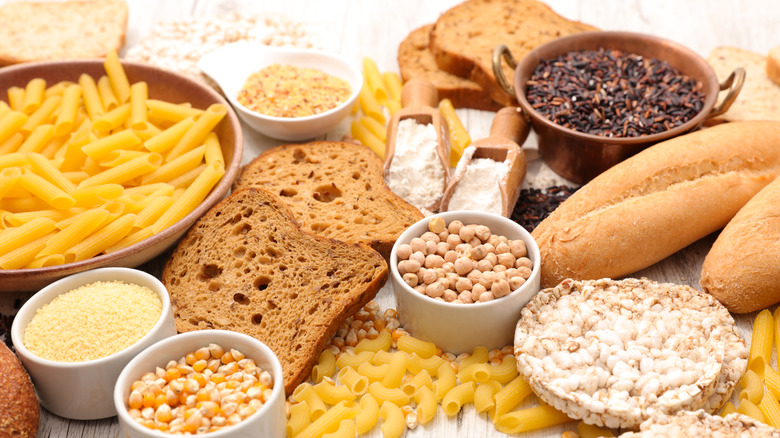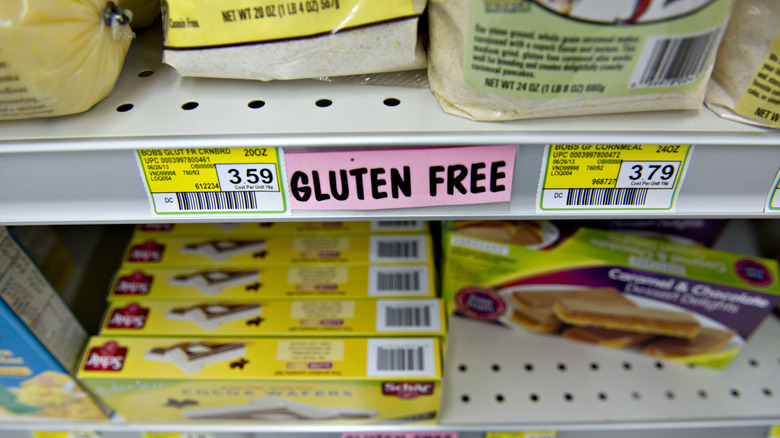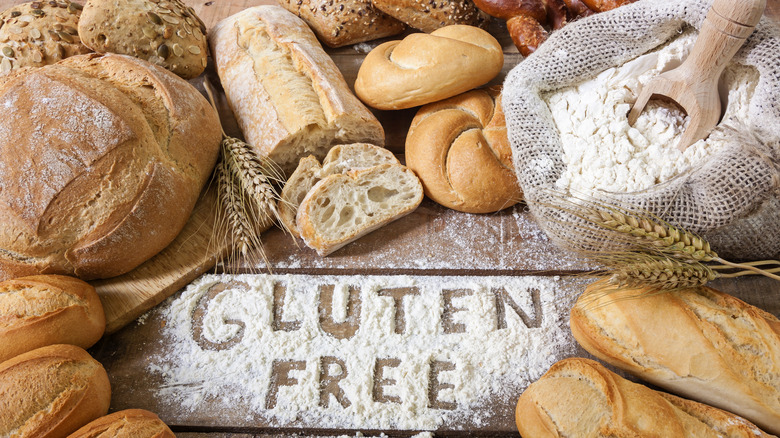The Truth About Gluten-Free Diets
Special diets are simply a part of the food landscape these days whether you're into them or not. Concepts like ketogenic, paleo, and Whole30 diets seem to be virtually everywhere and all have different restrictions for different reasons for dieters striving to achieve certain goals.
However, not all diets are followed solely for the sake of weight loss — some diets are actually pertinent to dieters' health, whether to alleviate allergies and sensitivities or to cut out other harmful foods. For example, people who have lactose sensitivities will likely opt for a dairy-free or even vegan diet, and those with a sensitivity to gluten will likely follow a gluten-free diet (which is harder than it sounds).
If you're curious about what gluten is, what it means to be on a gluten-free diet, and how to incorporate gluten-free eating into your lifestyle, let this be your all-encompassing guide to all things gluten-free (and where to find them near you).
What does gluten-free mean?
You've probably heard of the term gluten or gluten-free before but might not know what the term entails. Let's start at the beginning: what exactly is gluten? According to the Celiac Disease Foundation, gluten is a broad term for proteins in wheat, barley, rye, and triticale, which is why most foods that contain gluten are kinds of bread or grain-based products (examples include various cereals, crackers, and beer). This kind of protein is responsible for helping certain kinds of foods retain their shape (like an edible glue) but can also be found in foods that don't fit that description. Beer, for example, is a liquid that doesn't have a set shape like a loaf of bread does, but many types of beer definitely contain gluten.
So to be gluten-free means to only consume foods that do not contain gluten, meaning restricting certain things from your diet. In addition to breads, beer, flour, and cereal, and some potentially surprising items to watch out for include soups, salad dressings, and food coloring. Additionally, some varieties of oats contain gluten though others do not, so it's important to make that distinction when shopping.
Why you would need to follow a gluten-free diet
Gluten can be a gastrointestinal stressor and some people have sensitivities to it and choose to cut it out of their diets. Other people, specifically those with celiac disease, have a much stronger reaction that requires them to avoid gluten. The Celiac Disease Foundation explains that the condition is an autoimmune disease that causes the body to attack the small intestine when someone ingests gluten. In cases like these, it's especially important for one's health to live a gluten-free lifestyle.
Sometimes, people choose to cut gluten from their diets in order to generally eat healthier. Though there are rumored benefits of cutting out gluten (even if you're not sensitive to it) the protein really doesn't cause much need for concern. That being said, since gluten is found in a lot of carb-heavy foods, avoiding it may cut down your consumption of empty carbs, which can be beneficial in the long run. There are different potential side effects (both good and bad!) of removing gluten from your diet, which we'll address later.
What foods are considered gluten-free?
As a general rule of thumb, many naturally growing foods (vegetables, fruits, etc.,) don't contain gluten (via the Mayo Clinic). Certain grains, such as corn and quinoa, fall under the category of gluten-free as well. Meat and dairy are also safe to eat as they don't contain gluten unless they are mixed or prepared with it in some form. For example, fried chicken contains gluten within its crispy crust, so that's one item to avoid. You likely won't be consuming wheat, barley, or rye by themselves, and since these ingredients are used often to make processed foods that we eat, that's usually what you need to watch out for.
However, because awareness of gluten sensitivities and celiac disease has skyrocketed in the past decade, many traditionally gluten-filled foods are now being made without the troublesome protein. In fact, the number of children with celiac disease has doubled in the last 25 years, prompting a real demand for gluten-free foods (via Study Finds).
Where can you find gluten-free items?
Thankfully, because we've seen such a rise in people with gluten sensitivities, gluten-free products are becoming more and more available to the public. Items that were once hard to find and exclusively found in specialty stores can now be found in pretty much any local grocery store and online as well (via Verywell Health).
Diet-friendly chains like Trader Joe's are great stores for gluten-free shopping and are known to have a larger gluten-free product selection than competitors. But many major grocery store chains either have special sections dedicated to specialty foods like vegan and gluten-free products. Sometimes, stores will even feature gluten-free products right alongside their gluten-containing predecessors, like certain pasta and bread brands.
Additionally, if you're looking for specific gluten-free products or are aiming to try a variety of brands, using a search tool and shopping online can help you discover what brands and products are available for home delivery.
Why gluten-free food is more expensive
While there has been a huge increase in people with celiac disease and gluten sensitivity and therefore a much higher demand for gluten-free foods, the mass-production of gluten-free products is still very much a work in progress. Companies are still working out the kinks of how to effectively produce gluten-free foods that both resemble our gluten-filled favorites but don't sacrifice a lot of quality and flavor, and their gluten-free facilities are expensive to maintain. This means that there is a more limited selection of gluten-free foods (compared to those with gluten), resulting in higher price points. In 2019, BBC contributor Meredith Turits found that a package of pretzels that costs $3.00 could be $4.50 for the gluten-free version while pasta that is typically priced at .99¢ can be up to $4.50 when gluten-free. A 2019 paper published in Nature discusses gluten sensitivity in-depth and the resulting demand for gluten-free products, which are notably more expensive, less available, and oftentimes lacking in the nutritional quality of their gluten counterparts.
And, though the number of people with gluten sensitivities continues to increase, the majority of consumers are still purchasing traditional gluten products. Moreover, a lot of people with gluten sensitivities don't realize that gluten is the reason for gastrointestinal upset and feeling unwell. There isn't yet a definitive test for diagnosing someone with a gluten sensitivity, so discovering a gluten sensitivity is based primarily on trial and error (via NYU Langone Health).
Why not everyone will benefit from eating gluten-free
There is a misconception circulating these days that gluten is unhealthy and harmful to everyone, not just people with gluten sensitivities. This is causing lots of people without sensitivities to cut gluten from their diets when there's no urgent need to do so.
For people with gluten sensitivities, certain benefits like improved gut health, increasing energy levels, and clearer brain function can definitely be possibilities when removing gluten from their diets (via Delish). However, those looking for those same benefits may not see any results from cutting out gluten if they are doing so but didn't have a sensitivity in the first place.
Moreover, there can be some negative side effects to be aware of when cutting out gluten. Withdrawal symptoms, increasing hunger pangs, constipation, or fluctuations in weight are just some potential side effects of beginning a gluten-free diet. If you don't have a sensitivity, it might be in your best interest to continue your typical diet without cutting out gluten to save you from unnecessary aftereffects.
